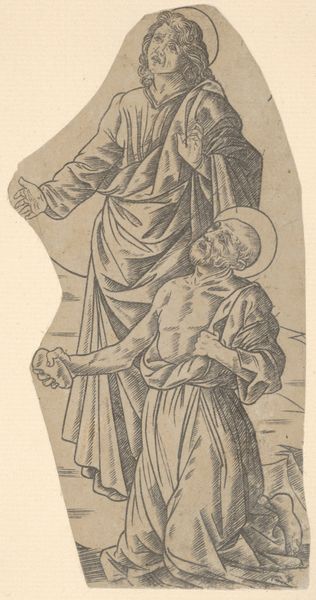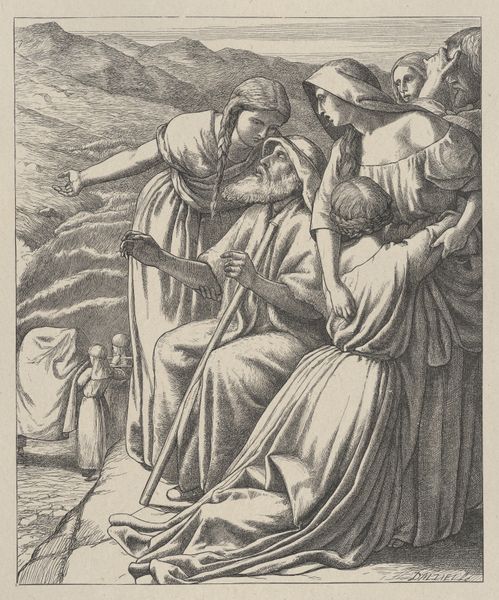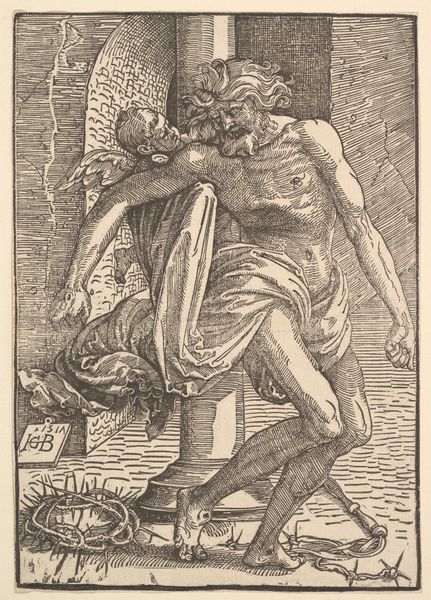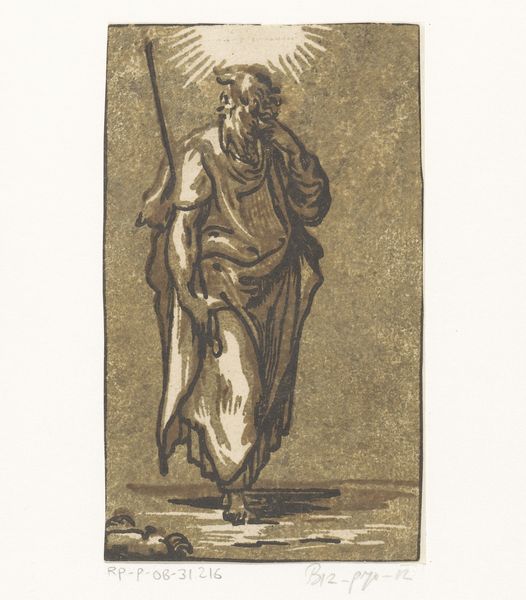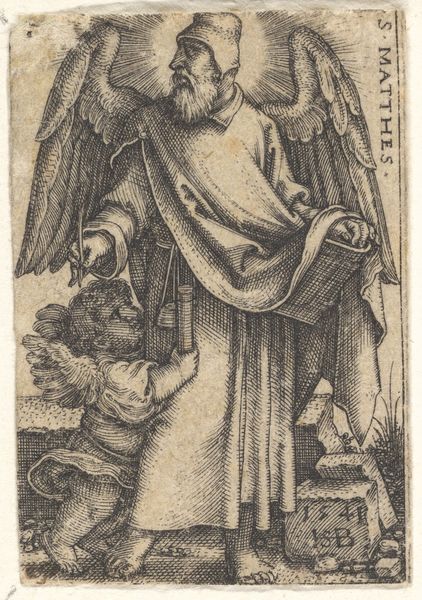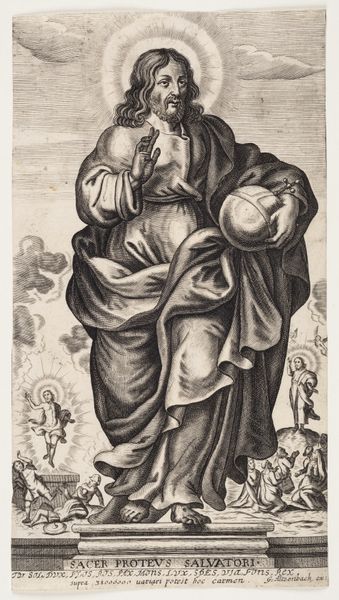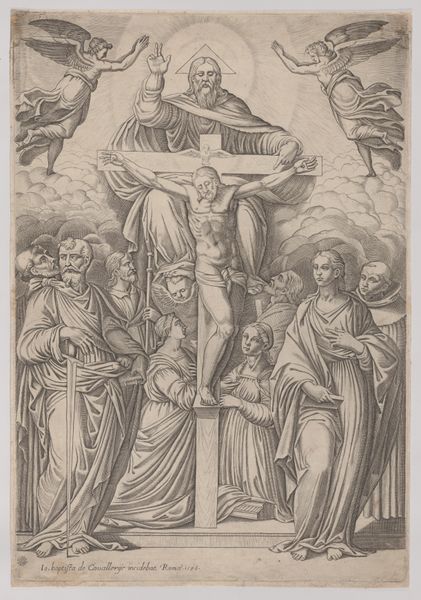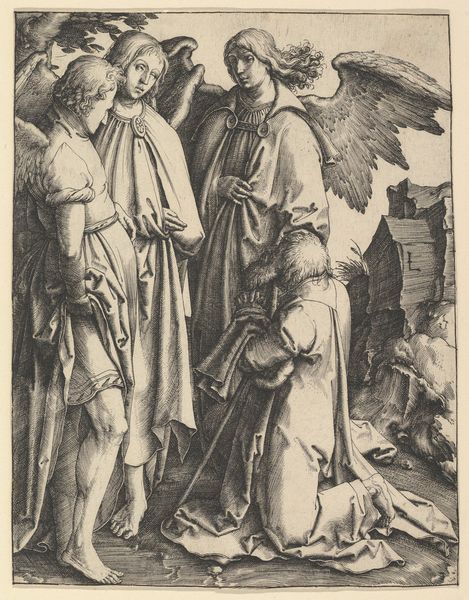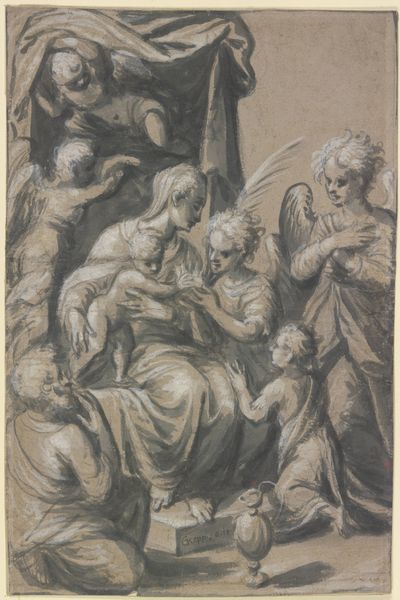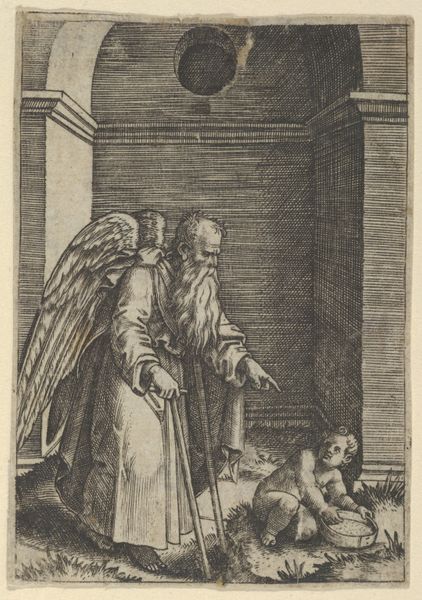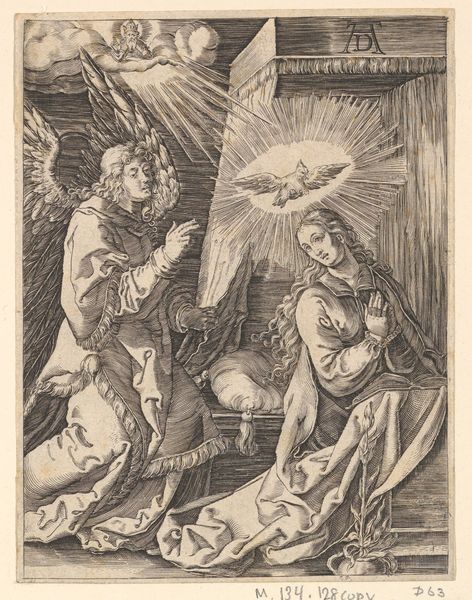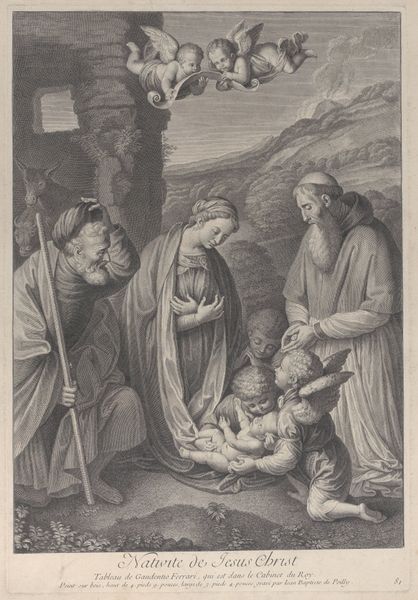
Saint Philip Baptising the Eunuch 1853 - 1898
0:00
0:00
drawing, print, gouache, paper, ink, pencil, graphite, charcoal
#
portrait
#
drawing
#
narrative-art
# print
#
gouache
#
pencil sketch
#
paper
#
11_renaissance
#
ink
#
pen-ink sketch
#
pencil
#
graphite
#
portrait drawing
#
charcoal
#
history-painting
#
pre-raphaelites
#
academic-art
Dimensions: 813 × 478 mm
Copyright: Public Domain
Editor: Here we have Edward Burne-Jones' "Saint Philip Baptising the Eunuch," created between 1853 and 1898, using graphite, ink, gouache and other media on paper. It feels very composed and deliberately staged. What do you see in this piece? Curator: Well, from a historical perspective, Burne-Jones, deeply rooted in the Pre-Raphaelite movement, often looked to the past—particularly medieval and early Renaissance art—for inspiration. This piece reflects that in its subject matter and style. Notice the stylized figures, the deliberate composition; they all harken back to earlier artistic traditions. Do you see how that interest in historical precedent shapes the image? Editor: Yes, I do. It’s like he’s intentionally pulling away from the realism of his time, embracing a more romantic and symbolic approach. What's the cultural context in England? Curator: Exactly! Culturally, this work appeared amidst a growing unease with industrialization. Artists sought refuge in a romanticized vision of the past. Think about it— the Pre-Raphaelites consciously rejected what they perceived as the soullessness of modern industrial society. Burne-Jones presented viewers with an alternative. What's especially telling is how this scene emphasizes individual spiritual experience during the rise of imperial ambitions. He depicts not a powerful king being baptized, but a lone Eunuch, highlighting themes of acceptance during the peak of British colonial power. Editor: So, in a way, it’s a quiet form of cultural commentary through religious art? Curator: Precisely! Burne-Jones invites viewers to question the dominant narratives. The composition directs attention towards a scene of personal revelation against institutional dictates. The visual storytelling reflects on inclusivity at a time of exclusion. Editor: This is fascinating! I came to this piece thinking it was just a biblical illustration, but seeing it as a reflection of Victorian England, its anxieties, and its quiet rebellions makes it so much richer. Curator: Indeed. Context unlocks so much within an artwork. Always consider what the artist might be trying to say to their contemporary audience, and how we receive that message today.
Comments
No comments
Be the first to comment and join the conversation on the ultimate creative platform.
